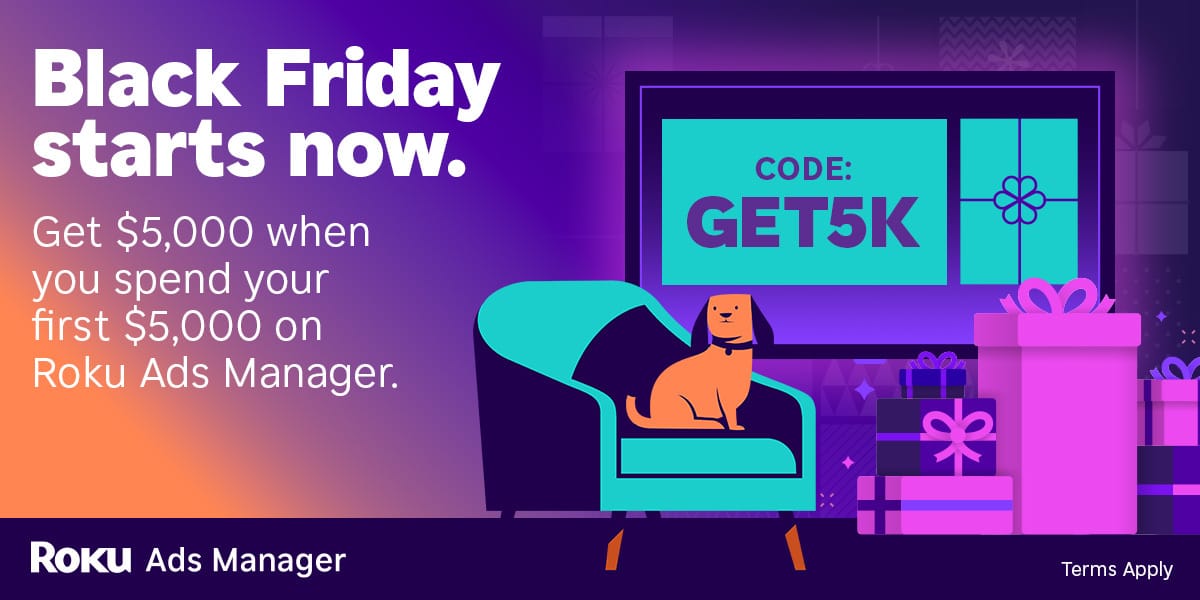
Hello! Today’s issue digs into the real reason marketing budgets get cut, and why so many marketers fail to defend their value. We’re also breaking down the new reporting clarity from Google’s Original Conversion Value and Meta’s Compare Attribution Settings. Then, with holiday traffic surging, we look at how brands can turn seasonal chaos into higher conversions with CRO techniques.
And more stories to explore below…
📱 Social Media Marketing

ShortsNinja
TikTok now lets users choose how much AI-generated content they want to see in their For You feed, introducing a dedicated AIGC slider inside the Manage Topics tool. Users can now dial AI videos up or down just like other content categories, and TikTok is pairing this with stronger detection via “invisible watermarking”, a platform-readable tag that stays intact even when content is re-uploaded or edited elsewhere. The app will apply these watermarks to AI videos created using TikTok tools and to content carrying C2PA’s Content Credentials. Why it matters (POV): TikTok positioning itself as the platform that lets users choose their AI experience helps strengthen trust, improve transparency, and give creators clarity as AI content floods the feed.
💰 Performance Marketing

weventure
The new metric, “Original Conversion Value” column, gives you a clean view of true revenue by stripping out all value rules and lifecycle goal adjustments that previously inflated reported numbers. The metric shows raw conversion value before Google layers on bonuses like New Customer Acquisition adjustments or custom value rules, making it far easier to diagnose performance and validate ROAS. Why it matters (POV): After years of marketers asking for transparency, Google is finally giving a way to separate real revenue from machine-optimized inflation, a small UI update that unlocks much clearer reporting.
Meta’s “Compare Attribution Settings” feature gives you clearer reporting than you think. (1) It reveals when remarketing results are inflated by 1-day view conversions, exposing scenarios where ads take credit for customers who never clicked. (2) Comparing 1-day vs. 7-day click windows shows how long people actually take to buy; crucial for diagnosing consideration cycles or identifying when emails, not ads, drove the final conversion. (3) Expanding to 28-day click uncovers delayed purchases that never show up in default reporting. (4) Toggling between First Conversion and All Conversions clarifies how many unique customers you truly influenced versus how many repeat actions Meta is counting. Why it matters (POV): Default attribution hides nuance and often exaggerates results. These hidden columns give you a more honest, contextual view of what your campaigns actually achieve.
🤝 Sponsored by Roku
CTV ads made easy: Black Friday edition
As with any digital ad campaign, the important thing is to reach streaming audiences who will convert. Roku’s self-service Ads Manager stands ready with powerful segmentation and targeting — plus creative upscaling tools that transform existing assets into CTV-ready video ads. Bonus: we’re gifting you $5K in ad credits when you spend your first $5K on Roku Ads Manager. Just sign up and use code GET5K. Terms apply.
📈 Conversion Rate Optimization

Americaneagle
December shoppers move faster but hesitate more, making seasonal testing a key revenue unlock. Retail brands can test delivery-date messaging, urgency timers, curated bundles, or animated CTAs to reduce anxiety and push customers across the line. Nonprofits can test clearer impact framing and matched-donation windows to convert year-end generosity. SaaS teams can experiment with outcome-focused annual pricing or fast-track onboarding for buyers racing against Q1 budgets. Travel brands can lift bookings through flexible cancellation tests and personalized offers for returning visitors, while education companies can boost January enrollment with cohort-based messaging and early-action pricing. Why it matters (POV): Peak-season traffic is meaningless without friction-removal, urgency, and clarity; smart A/B testing during the holidays turns chaotic user behaviour into predictable revenue gains.
⚡ Trends & Updates

T-ROC
Zebra’s new Global Shopper Study shows customer satisfaction slipping again this year as people grow frustrated with out-of-stocks and slow checkouts, pushing retailers to invest heavily in automation, computer vision, and real-time inventory sync to protect margins. But adoption is slowed by poor data quality and inconsistent staff training, even as 84% of retail leaders now rank real-time inventory visibility as their top priority. Why it matters (POV): Retail’s old operating model is breaking; without accurate stock data and AI-powered workflows, retailers will keep losing sales to friction, while those who modernize fast will win on availability, speed, and customer trust.
Meta scored a major win in its antitrust case, with a U.S. judge ruling the FTC failed to prove Meta still holds monopoly power, meaning Instagram and WhatsApp won’t be forced into a breakup. The court said the social landscape has changed too much since the FTC filed the case in 2020, with TikTok now Meta’s strongest rival. While the FTC argued Meta “neutralized threats” through past acquisitions, the judge said those old deals don’t prove current monopoly behavior. Why it matters (POV): Meta keeps its core ecosystem intact, but regulators are clearly struggling to define monopoly power in a market reshaped by TikTok, AI, and shifting user behavior.
🎯 Strategy

Equinet Media
Marketing leaders keep struggling to secure budget, not because their work lacks impact, but because they often frame it in ways the C-suite doesn’t trust or value. The biggest blockers are avoidable: using metrics that don’t tie to financial outcomes, presenting ROI estimates built on weak assumptions, ignoring past insights, failing to show how success will be proven, focusing on storytelling instead of financial clarity, prioritizing short-term wins over long-term value, and presenting inconsistent data. The fix is discipline, linking marketing KPIs to business KPIs, grounding estimates in real data, reusing past learnings, learning to speak the CFO’s language, balancing short- and long-term investments, and aligning on measurement. Why it matters (POV): trust is the real currency when marketing can translate creativity into financial clarity, budgets grow instead of shrink.
Gen AI is speeding up market research by using synthetic personas and digital twins to simulate how consumers think, decide, and respond, without the time and cost of traditional surveys. Synthetic personas model entire segments, while digital twins use real individual-level data to mimic specific people. Early research shows promising accuracy but also limitations like bias and weaker performance on politically or emotionally complex topics. Neither method is fully ready to replace human research, but both offer fast, affordable ways to test ideas, explore behavior, and augment traditional insights. Companies are encouraged to begin experimenting now with small tests, clear benchmarks, and ongoing validation. Why it matters (POV): As AI reshapes marketing, teams that learn to blend synthetic data with real-world testing will gain faster insights, lower research costs, and a competitive edge.
🗣️ Your Opinion Matters
How did today’s edition work for you?
— Sam C.
